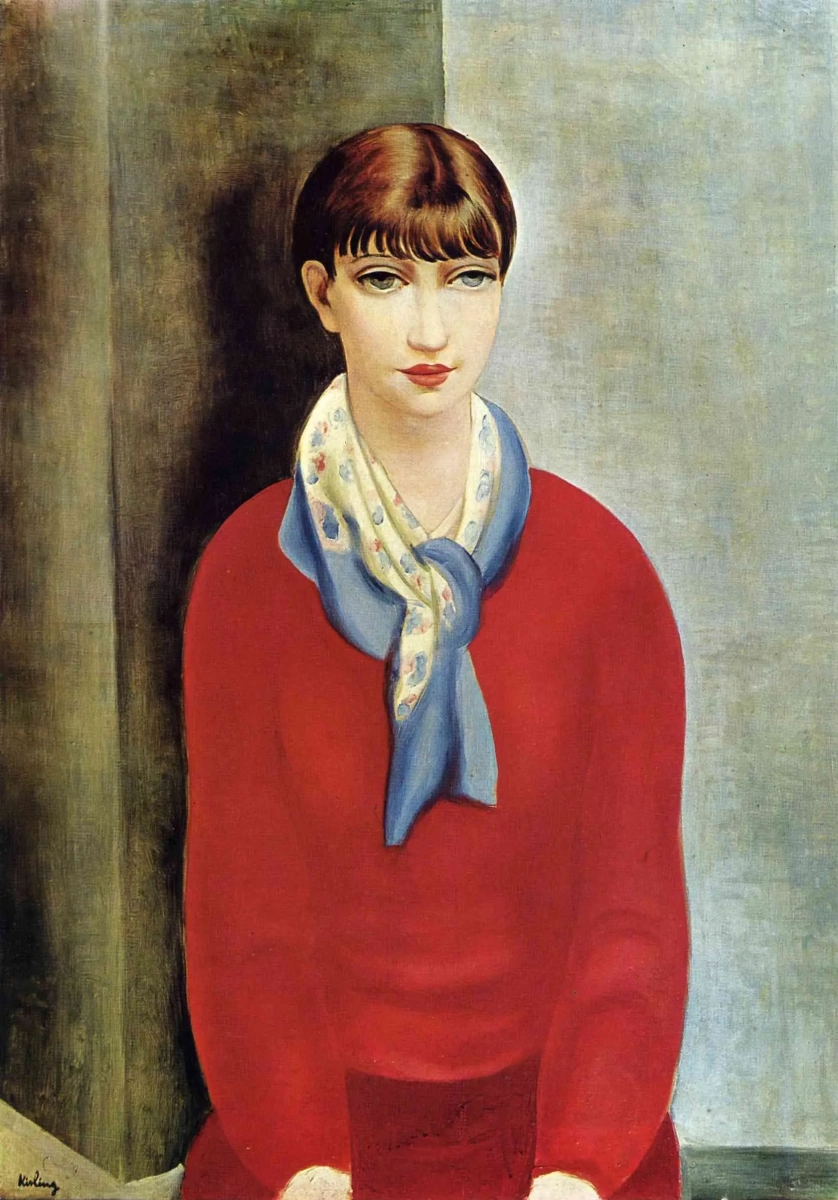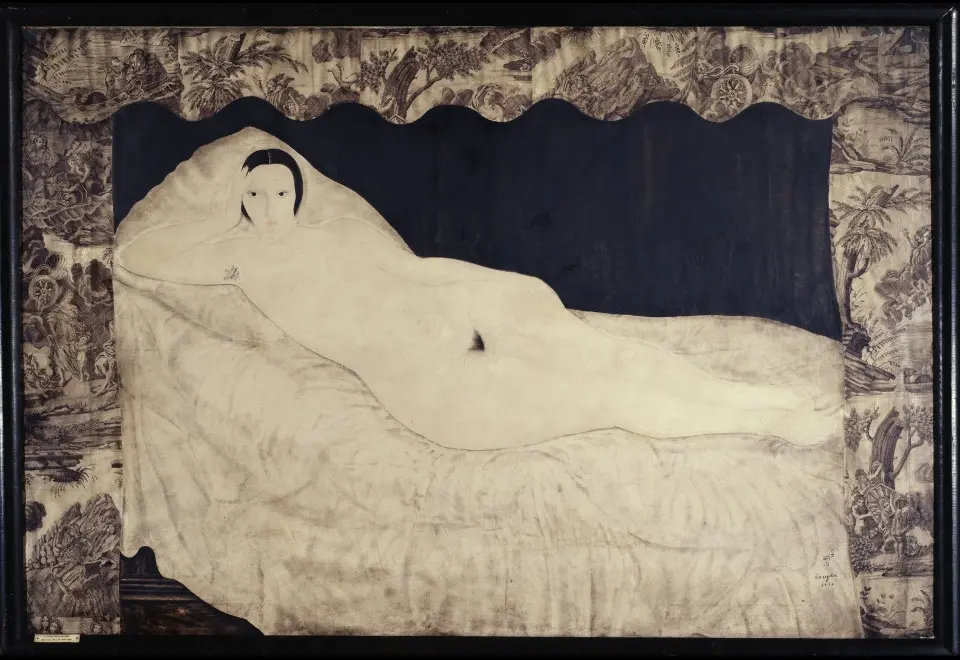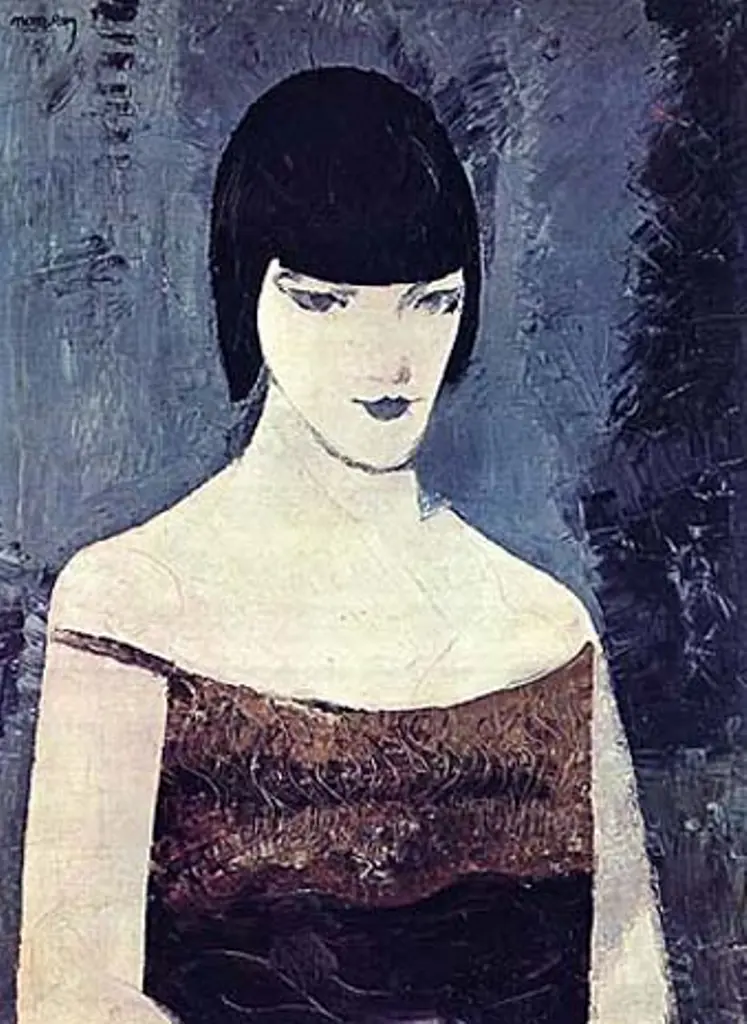Being a muse is a thankless job. People would see her face a thousand times, admire the work of an artist or sculptor, but often they would not even remember her name. Kiki de Montparnasse was no exception, although her face and her body, turned into a violin, are familiar to almost everyone. We tell the story of a woman who "defined the epoch of Montparnasse".

Kiki, the Queen of Montparnasse, was born in the late 1910s. Before that, her name was Alice Ernestine Prin, and her life was extremely far from royal.
Alice was born on 2 October 1901 in the commune of Chatillon-sur-Seine in Burgundy. She never knew her father, whereas her mother, Marie Ernestine Prin, had given birth to two girls before her, but both of them did not survive. Alice was more fortunate, although the stigma of being illegitimate and poverty can hardly be called so much luck. When Marie went to work in Paris, Alice remained in the care of her grandmother, along with other children of varying degrees of kinship — some were abandoned by their parents, others were orphaned.
Alice’s childhood can hardly be called happy. On the one hand, the grandmother tried her best to replace the girl’s mother and raise her in love and care. But at the same time, the family lived extremely poorly, and although she adored her grandmother, Alice still missed her mother very much. Another close person for the girl was her godfather, who, among other things, was a bootlegger. Together with him, Alice began to sing in local bistros, but thanks to him, she became addicted to alcohol from her childhood.
Alice was born on 2 October 1901 in the commune of Chatillon-sur-Seine in Burgundy. She never knew her father, whereas her mother, Marie Ernestine Prin, had given birth to two girls before her, but both of them did not survive. Alice was more fortunate, although the stigma of being illegitimate and poverty can hardly be called so much luck. When Marie went to work in Paris, Alice remained in the care of her grandmother, along with other children of varying degrees of kinship — some were abandoned by their parents, others were orphaned.
Alice’s childhood can hardly be called happy. On the one hand, the grandmother tried her best to replace the girl’s mother and raise her in love and care. But at the same time, the family lived extremely poorly, and although she adored her grandmother, Alice still missed her mother very much. Another close person for the girl was her godfather, who, among other things, was a bootlegger. Together with him, Alice began to sing in local bistros, but thanks to him, she became addicted to alcohol from her childhood.

Kiki in 1920s
In 1913, her mother took Alice to Paris, but life there was not much better than in Chatillon-sur-Seine. The girl studied at a local school for only a year, after which she had to get a job at a factory for the repair of soldiers' shoes. A couple of years later, Marie Prin fell in love with a soldier who was 11 years her junior and returned to Paris from the front after being wounded. Soon he moved into their tiny apartment on the Rue Dulac, and they felt an extreme lack of space there. Then Alice’s mother found a job with living in a bakery, where the girl had to work long and hard for a meager salary. In the end, Alice ended up in the workshop of the sculptor Ronchin and agreed to pose for him nude
. Marie Prin did not have any opportunity or desire to help her daughter somehow, disowned her angrily, as soon as she had learned about this way of earning money.

The Courtier
In 1920s Paris, Kiki de Montparnasse was what they call It-girl today — the one and only, style icon, role model. Her body, face and name were everywhere. Man Ray immortalized Kiki in his perhaps most famous work, Ingres’s Violin. One of the most iconic creations of the Spanish sculptor Pablo Gargallo, a surreal gold bust, also depicts Kiki. Now her name is a brand of luxury lingerie (which is quite ironic, because Kiki herself did not wear lingerie). For most of our contemporaries, this is all that remains of the legend of Kiki de Montparnasse. This, and also a tomb in Paris, with an inscription "The Queen of Montparnasse".
Kiki of Montparnasse
1928
After the wrangle with her mother, 16-year-old Alice Prin found herself homeless. Of course, at that time such a situation was not uncommon, and, like many young women before her, Alice understood that she had to look for opportunities to survive. For an attractive girl, survival often meant sometimes unwanted, but still necessary dependence on men.
In Paris (indeed, as in many other cities) in those years, the word "model" was synonymous with the word "prostitute" for many. And although most of the models did sleep with artists and sculptors, we’d better believe that most often this happened by mutual agreement. Alice was very pragmatic about her position, she was relaxed, enjoyed sex and easily fit into the circle of Parisian bohemians, accepting their rules of the game.
Fast enough, Alice became one of the most popular models in Paris. In the earliest years of her career, the girl was painted by Chaim Soutine, Maurice Utrillo and Amedeo Modigliani. Alice fell in love with one of the artists with whom she worked — she lived with the Pole Maurice Mendjiski for several years and it was he to nickname her Kiki.
In Paris (indeed, as in many other cities) in those years, the word "model" was synonymous with the word "prostitute" for many. And although most of the models did sleep with artists and sculptors, we’d better believe that most often this happened by mutual agreement. Alice was very pragmatic about her position, she was relaxed, enjoyed sex and easily fit into the circle of Parisian bohemians, accepting their rules of the game.
Fast enough, Alice became one of the most popular models in Paris. In the earliest years of her career, the girl was painted by Chaim Soutine, Maurice Utrillo and Amedeo Modigliani. Alice fell in love with one of the artists with whom she worked — she lived with the Pole Maurice Mendjiski for several years and it was he to nickname her Kiki.
Kiki of Montparnasse
1925, 64×46 cm
Portrait of a woman with cigarette (Kiki de Montparnasse)
1924, 49.5×35.4 cm
The Favourite
By the early 1920s, the star of Kiki de Montparnasse flared up in full force, and such celebrities as Moïse Kisling and Tsuguharu Fujita revolved in its orbit. With the latter, Kiki was connected not only with joint work, but also with tender friendship over the years. She was Fujita’s favourite model in the 1920s, and his Reclining Nude (1922) marked the beginning of his real success. Exhibited at the Salon d’Automne in the year of its creation, this painting was sold for eight thousand francs, and Fujita gave part of this amount to Kiki.In 1921, Maurice Mendjiski decided to go to the Cote d’Azur and persuaded Kiki to go with him, but she refused to leave Montparnasse with its turbulent bohemian life. This decision turned out to be fateful.
Reclining Nude (the Nude Portrait of Kiki)
1922, 52.8×76.8 cm

Kiki in one of the cafés in Montparnasse (in the background with Tsuguharu Fujita)
Man Ray first met Kiki in a Parisian café. She was furious: she had just been denied service because she was not wearing a hat. The photographer and his companion, wanted to correct this injustice and invited Kiki to their table. She soon became the main muse of Ray and his lover for the next seven years. The photographer’s highly intelligent friends were surprised that he connected his life with a woman who did not even graduate from high school. When they asked him if Kiki was smart, he replied that he himself was smart enough for the two of them. Not much of flattering remark, hardly a compliment. However, Kiki, despite her lack of education, was by no means just a beautiful fool.
Of course, Kiki was primarily a muse for Man Ray, but never just an attractive body. She continued to inspire him even after their breakup. For example, Ray’s famous lithograph The Lovers (1934) is a memory of Kiki. The photographer recalled how one day he was going to go to dinner, and Kiki jealously left "the perfect imprint of her beautiful red lips" on his collar.
Of course, Kiki was primarily a muse for Man Ray, but never just an attractive body. She continued to inspire him even after their breakup. For example, Ray’s famous lithograph The Lovers (1934) is a memory of Kiki. The photographer recalled how one day he was going to go to dinner, and Kiki jealously left "the perfect imprint of her beautiful red lips" on his collar.
Kiki of Montparnasse
1923

Man Ray and Kiki’s photo portrait
Kiki understood that being a muse could not last long. She did not try to look for wealthy patrons to support her for the rest of her life. She took her fate into her own hands, while not stopping to enjoy her life for a second. Having starred in several short films of Man Ray, in 1923, Kiki decided to try her luck in Hollywood; however, she was unlucky. But despite this setback, the year was very successful for Kiki with the opening of a new nightclub in Paris. All the bohemians of Montparnasse gathered in Le Jockey, and one evening, during another daring party Kiki climbed onto the table and began to dance, singing obscene songs. She soon became a local celebrity, one might even say, a tourist attraction.

A still from the movie of Man Ray

Kiki pictured by Man Ray, 1920s
The Queen
Kiki’s tumultuous life never slowed down. She has always been the central figure of any cultural events in Paris. She continued to appear in avant-garde films, drank with sailors in the evenings and sang in bars. She made friends with Hemingway and Jean Cocteau. Unfortunately, the acquaintance with the latter could hardly be called successful: it is believed that it was Cocteau who introduced Kiki to opium. Just as with alcohol, Kiki did not restrain herself in the amount of the drug taken, and both addictions eroded her health gradually. In the town of Villefranche-sur-Mer, she took part in a fight, after which she was taken into prison, mistaken for a prostitute. Numerous friends of Kiki began to fight for her release, and Man Ray defended her in court.
Kiki as a prostitute seducing Man Ray. South of France, c. 1925.
Shortly thereafter, Kiki began painting and took up memoirs. A personal exhibition of Kiki’s bright and naive figurative works was held in 1927. The text for the catalogue was composed by Robert Desnos, and most of the paintings were sold on the first evening. Probably, the artist’s controversial reputation also contributed to this success.
Kiki was only 28 when the first chapters of her book were published. But, no doubt, she had something to tell. Ernest Hemingway has promised to write a foreword to the English version of Kiki’s Memoirs. Over the next decade, Kiki developped her multifaceted creative career. She acted in films and performed in cabarets, thus opening her own venue seemed only a matter of time. Babel cabaret-club opened in 1937, but Kiki did not manage it for long — soon the Second World War broke out. However, she still managed to release several her musical records beforehand.
Kiki was only 28 when the first chapters of her book were published. But, no doubt, she had something to tell. Ernest Hemingway has promised to write a foreword to the English version of Kiki’s Memoirs. Over the next decade, Kiki developped her multifaceted creative career. She acted in films and performed in cabarets, thus opening her own venue seemed only a matter of time. Babel cabaret-club opened in 1937, but Kiki did not manage it for long — soon the Second World War broke out. However, she still managed to release several her musical records beforehand.

Kiki continued to be loyal to Montparnasse, even as the war divided and scattered the representatives of the Parisian creative community. Over time, Kiki ceased to be the Queen of Montparnasse — she just lived there, suffered from the consequences of the war and her own addictions. Man Ray recalled his meeting with Kiki after the war: like most Europeans, she had changed a lot, suffered from oedema, lost her voice and looked "very sick".
In 1953, Kiki de Montparnasse died — most likely, the cause of death was alcohol and drug abuse. Tsuguharu Fujita said that the glorious days of Montparnasse were buried forever together with Kiki. And Ernest Hemingway wrote that she "defined the Montparnasse era more than Queen Victoria did the Victorian era".
In 1953, Kiki de Montparnasse died — most likely, the cause of death was alcohol and drug abuse. Tsuguharu Fujita said that the glorious days of Montparnasse were buried forever together with Kiki. And Ernest Hemingway wrote that she "defined the Montparnasse era more than Queen Victoria did the Victorian era".

Kiki herself did not like bombastic phrases. In her memoirs, she wrote: "All I need is an onion, a bit of bread, and of bottle of red wine, and I will always find somebody to offer me that."
Leseempfehlung


























